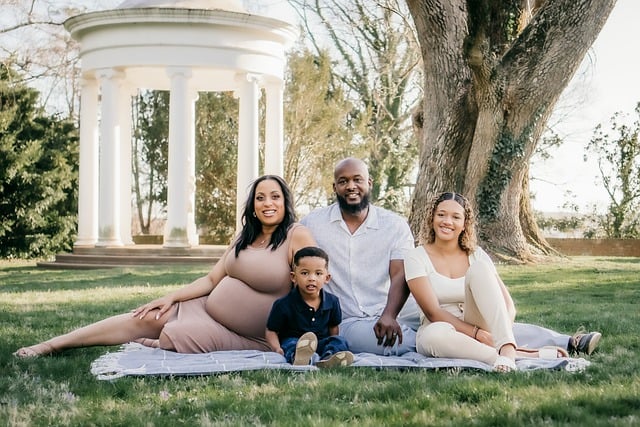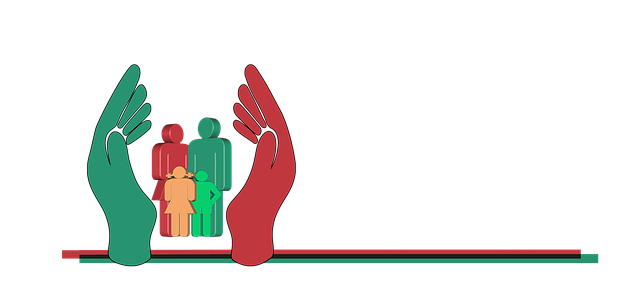Child welfare legal services in Oregon, led by the Department of Human Services (DHS) and its Child Welfare Division, prioritize the safety and well-being of at-risk children while preserving familial connections. Balancing these goals, DHS works with parents through Lane County child advocacy centers and family law courts to protect parental rights during investigations and interventions, aiming for family reunification when possible. Key aspects include thorough DHS investigations, collaborative support for parents, and counseling services under Oregon family law, all guided by the child protective services law. This holistic approach ensures children's security while empowering parents to make informed decisions in their children's best interests.
Child welfare and protective services are vital components of ensuring a safe and nurturing environment for children. This comprehensive guide offers valuable insights into various aspects of child protection, from legal frameworks to local initiatives. We explore ‘child welfare legal services’, delving into the protections afforded to children while balancing parental rights. The role of agencies like DHS in handling complex cases is scrutinized, alongside successful local efforts in Lane County. Additionally, we navigate Oregon’s family law specifics and provide real-world examples, demonstrating the practical application of legal protections within child welfare practices.
- Understanding Child Welfare Legal Services: An Overview of Protections for Children
- Parental Rights and Responsibilities: Balancing Protection with Family Dynamics
- The Role of DHS in Child Welfare Cases: Handling and Support
- Lane County Child Advocacy: Local Efforts for Comprehensive Care
- Navigating Oregon Family Law: Specifics and Implications for Child Protective Services
- Legal Protections in Action: Real-World Examples from Child Welfare Practices
Understanding Child Welfare Legal Services: An Overview of Protections for Children

Child welfare legal services play a pivotal role in safeguarding and promoting the well-being of children. In Oregon, these services are primarily provided by the Department of Human Services (DHS), specifically through its Child Welfare Division. The primary objective is to ensure the safety, stability, and healthy development of children who may be at risk due to neglect, abuse, or other hazardous situations. Understanding the legal protections offered under child welfare laws is crucial for both parents and guardians, as it empowers them to know their rights while ensuring the best interests of the child are upheld.
In cases involving DHS child welfare, parental rights protection is a significant aspect. While the agency’s primary focus is on the child’s safety, it also aims to preserve family connections when possible. Lane County child advocacy centers and Oregon family law courts work together to offer support and guidance to families navigating these challenging situations. The child protective services law outlines procedures for investigation, intervention, and potential placement of children in foster care or with relatives while ensuring regular review and case management to facilitate a safe and permanent living arrangement.
Parental Rights and Responsibilities: Balancing Protection with Family Dynamics

In the context of child welfare legal services, understanding parental rights and responsibilities is a delicate balance between protecting the well-being of children and preserving family dynamics. Parental rights are legally protected under Oregon family law and DHS child welfare cases, ensuring parents have a say in decisions affecting their children. However, when there are concerns about a child’s safety or well-being, Child Protective Services (CPS) may intervene. CPS’s role is to ensure the child’s protection, while also working towards family reunification whenever possible.
Lane County child advocacy emphasizes a collaborative approach, involving parents and guardians in the process. This includes providing resources and support to address any issues that may have contributed to the child’s risk. The ultimate goal is to foster a safe and stable environment for children, strengthening family bonds without compromising their security. In these cases, parental rights protection is not just about legal representation but also ensuring parents are equipped to make informed decisions in the best interests of their children.
The Role of DHS in Child Welfare Cases: Handling and Support

In many jurisdictions, including Oregon and specifically Lane County, the Department of Human Services (DHS) plays a pivotal role in child welfare cases. DHS is charged with providing both protective services and support to ensure the well-being and safety of children. When concerns about a child’s welfare arise, whether due to allegations of abuse or neglect, DHS intervenes to investigate and assess the situation. If necessary, they remove the child from their home environment and place them in a safe, temporary setting while working collaboratively with parents or guardians to address the underlying issues.
The department facilitates various services tailored to the unique needs of each family involved in a child welfare case. This includes counseling, parenting classes, and access to legal services to protect parental rights under Oregon family law and the child protective services law. Lane County child advocacy centers are designed to offer comprehensive support to children who have experienced trauma, ensuring they receive the necessary care and resources for their emotional and psychological well-being. DHS’s multifaceted approach aims to not only protect vulnerable children but also to help families rebuild and strengthen their relationships.
Lane County Child Advocacy: Local Efforts for Comprehensive Care

In Lane County, Oregon, a robust and comprehensive approach to child welfare and protection has been developed through dedicated local efforts. The Lane County Child Advocacy Center stands as a beacon of hope for vulnerable children, offering specialized services that address physical, emotional, and psychological needs. This center is at the forefront of providing a safe space where children can share their experiences and receive immediate support from various professionals, including social workers, therapists, and law enforcement officers.
The advocacy center plays a pivotal role in coordinating care for children involved in DHS child welfare cases, ensuring that parental rights protection and Oregon family law are upheld while prioritizing the best interests of the child. By bringing together diverse stakeholders under one roof, the Lane County Child Advocacy initiative streamlines the process, enhancing the overall effectiveness of child protective services law enforcement. This collaborative approach fosters a supportive environment, enabling children to heal and navigate challenging circumstances with resilience.
Navigating Oregon Family Law: Specifics and Implications for Child Protective Services

Navigating Oregon’s complex family law system is a critical aspect of effective child welfare and protective services. When it comes to DHS child welfare cases, understanding the intricate interplay between child welfare legal services and parental rights protection is paramount. Oregon, with its robust Oregon family law framework, offers both safeguards for children and support for families facing challenges. The state’s legal system recognizes the delicate balance between ensuring a child’s safety and security while also respecting and preserving parental rights whenever possible.
In Lane County, for instance, dedicated child advocacy efforts focus on collaborative strategies to resolve child protective services law issues. This involves close cooperation between legal professionals, social workers, and community organizations. By integrating these diverse expertise, the goal is to create a holistic approach to addressing the unique needs of each family while adhering to the stringent requirements of child protection laws.
Legal Protections in Action: Real-World Examples from Child Welfare Practices

In the realm of child welfare and protective services, legal protections are pivotal to ensuring the safety and well-being of children. Real-world examples from practices like Lane County Child Advocacy in Oregon highlight how these laws are put into action. When a child is alleged to be abused or neglected, DHS child welfare cases initiate thorough investigations, balancing the need for protection with the parental rights protection guaranteed under Oregon family law.
For instance, if a parent is accused of neglect due to inadequate housing, Child Protective Services (CPS) does not immediately remove the child. Instead, they work collaboratively with the family to create a safety plan and provide resources, such as housing assistance or case management services. This approach illustrates how legal protections in child welfare are designed to be supportive yet firm, ultimately aiming to preserve families while prioritizing the best interests of the child.






